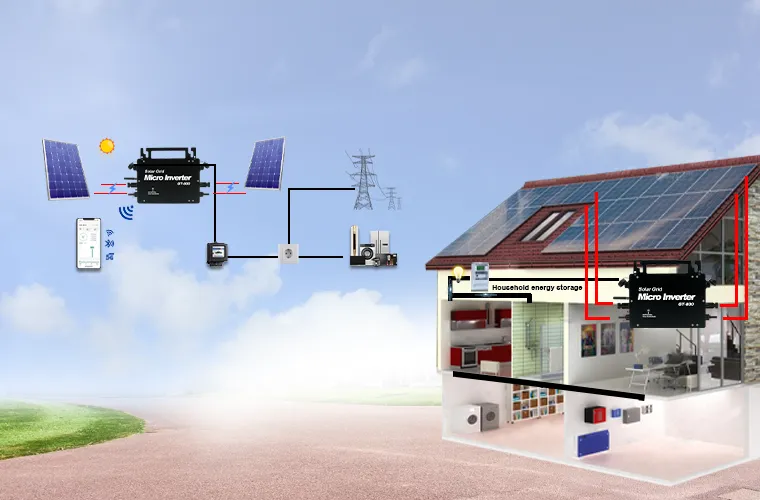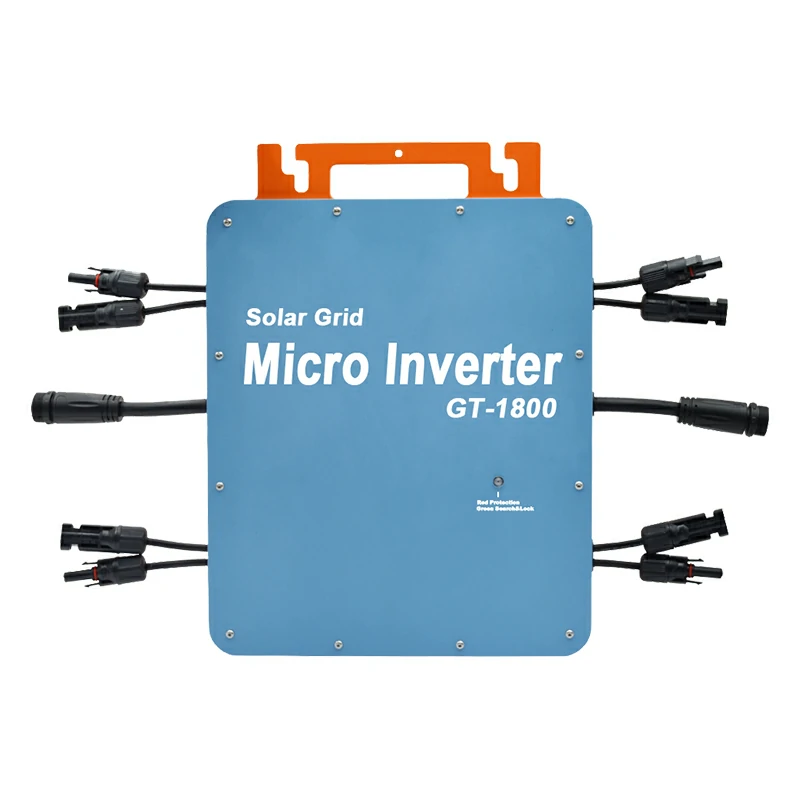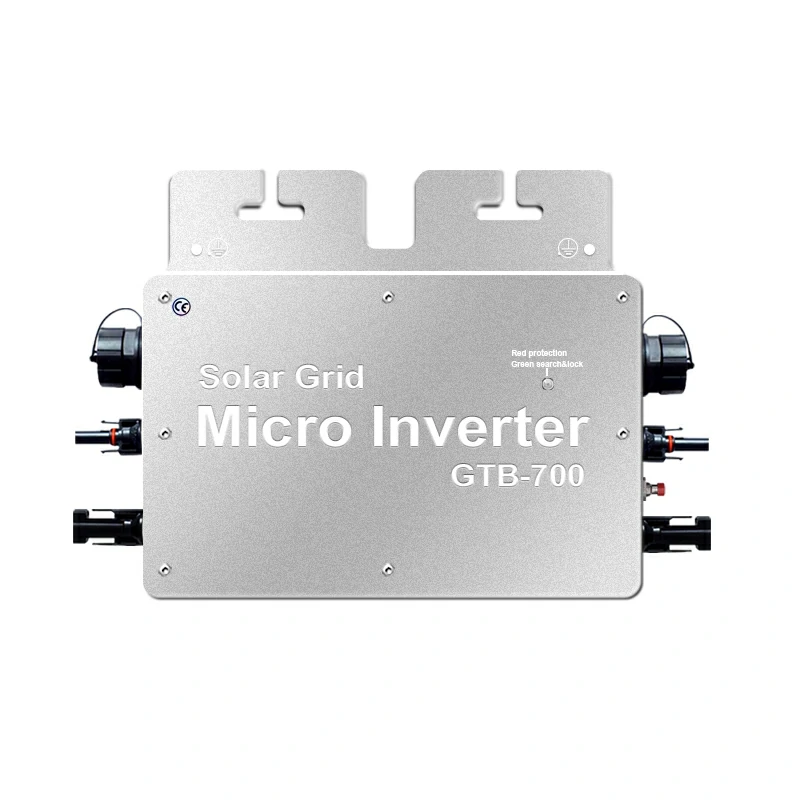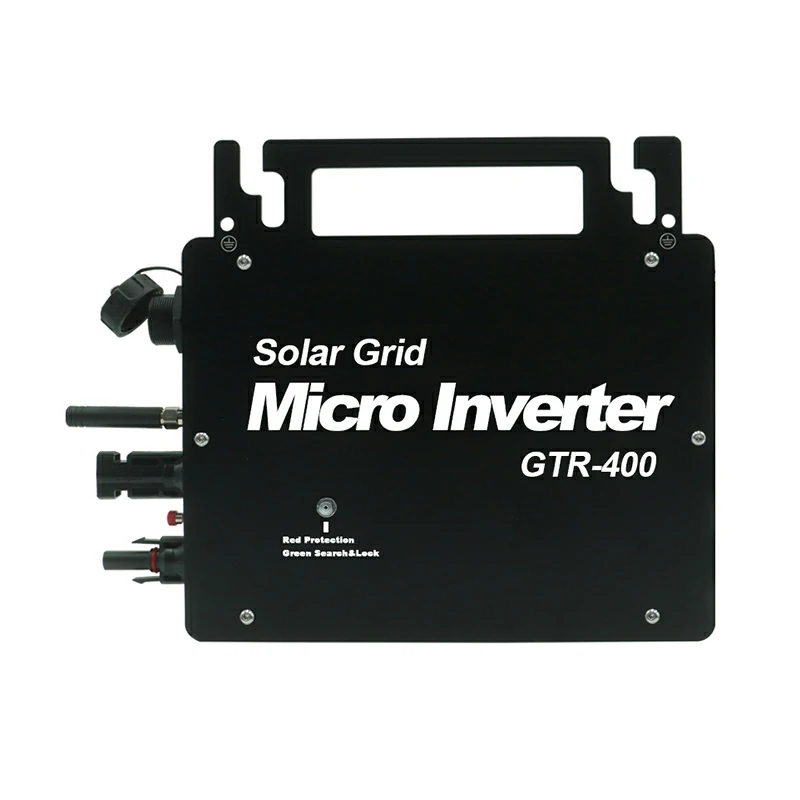
Welcome to an enlightening journey into the world of solar energy. As a pioneering microinverter manufacturer, we’re here to delve into one of the most critical aspects of solar power systems – Maximum Power Point Tracking, commonly known as MPPT. This technology is crucial for anyone interested in harnessing solar energy efficiently, and it’s a key feature in our advanced MTTP micro inverters. In this article, we aim to demystify MPPT, making it understandable for solar energy enthusiasts and industry professionals.

Basics of Solar Energy and Solar Panels
Understanding the core of solar power begins with knowing how solar panels operate. Essentially, solar panels are devices that convert sunlight into electricity. They’re composed of numerous solar cells made from materials like silicon, which can absorb photons from sunlight and generate an electric current. However, the efficiency of this conversion isn’t constant. It varies based on several factors, including the sun’s angle, temperature, and shadow. This variability leads us to need technologies like MPPT in our MTTP microinverters to ensure that solar panels operate at their optimal capacity.
What is Maximum Power Point Tracking (MPPT)?
Maximum Power Point Tracking, or MPPT, is a sophisticated technology employed in microinverters, including our MTTP micro inverters, to maximize the efficiency of solar panels. But what exactly does it do? In simple terms, MPPT is an intelligent electronic tracking system that constantly monitors and adjusts the operating points of solar panels to ensure they produce the maximum power possible at any given time.
Solar panels have a specific point in their power-voltage curve where they achieve maximum output – this is what we call the ‘Maximum Power Point.’ However, this point isn’t static; it changes with environmental conditions like sunlight intensity and temperature. MPPT’s role is to detect this ever-changing point and adjust the electrical load accordingly. By doing so, MPPT can significantly increase a solar panel’s efficiency and power output, making it a crucial component in modern solar energy systems.
The Science Behind MPPT
The magic of MPPT lies in its ability to find and maintain the Maximum Power Point of a solar panel under varying conditions. At its core, MPPT technology involves complex algorithms that continuously monitor the voltage and current output of the solar panels. These algorithms calculate the maximum power point and adjust the resistance seen by the solar panel to stay as close to this point as possible.
This process is crucial because solar panels operate at different efficiencies depending on environmental factors. For instance, the maximum power point will be higher on a cloudy day than on a sunny day. MTTP technology in our micro inverters ensures that your solar panels will operate at the highest efficiency regardless of the conditions.
Benefits of MPPT
The primary benefit of using MPPT, especially in MTTP microinverters, is the significant increase in the efficiency of your solar energy system. By continuously operating at the maximum power point, you can expect:
- Higher Energy Yield: MPPT maximizes the energy production of your solar panels, even under less-than-ideal conditions.
- Better Performance in Varied Conditions: Whether cloudy, hot, or cold, MPPT adjusts to ensure optimal performance.
- Increased Financial Savings: With higher efficiency, your solar system generates more power, reducing your reliance on the grid and lowering energy bills.
Compared to other technologies like PWM (Pulse Width Modulation), MPPT is more effective in extracting maximum power from solar panels, making it a preferred choice for those looking to optimize their solar investments.
Common Misconceptions and Questions About MPPT
Debunking Myths
MPPT technology, while revolutionary, needs to be understood. Let’s clear up some myths:
- Myth: MPPT is only helpful in sunny conditions.
- Truth: MPPT enhances efficiency regardless of weather, adjusting to various light conditions to optimize power output.
- Myth: All solar inverters are the same.
- Truth: Not all inverters are created equal. MTTP micro inverters with MPPT technology are specifically designed to maximize power extraction from solar panels.
Frequently Asked Questions
How does MPPT differ from PWM?
- MPPT and PWM (Pulse Width Modulation) regulate solar power, but MPPT is generally more efficient, especially in less ideal weather conditions.
Is MPPT necessary for all solar power systems?
- While not mandatory, MPPT is highly recommended for maximizing the efficiency of your solar panels, particularly in systems with micro inverters.
Can MPPT technology work with any solar panel?
- Yes, MPPT technology is versatile and can enhance the performance of virtually any solar panel.
Are MTTP micro inverters with MPPT more expensive?
- Initially, they might be more costly than traditional inverters, but the increase in efficiency can lead to more significant savings in the long run.
Choosing the Right MPPT Controller
Selecting a suitable controller when integrating MPPT technology into your solar power system. Here are some tips to help you make the best choice:
- Compatibility with Your Solar Panels: Ensure the MPPT controller matches your solar panels’ voltage and current specifications. This compatibility is crucial for optimal performance.
- System Size and Scalability: Consider the size of your existing solar setup and potential future expansions. A suitable MPPT controller should be able to handle your current needs and scale up if required.
- Environmental Factors: Some controllers are better suited for specific environmental conditions. If your location experiences extreme weather, look for a robust, durable controller and weather-resistant features.
- Efficiency Ratings: Check the efficiency ratings of different MTTP micro inverters. A higher efficiency rating means more effective power conversion and less energy loss.
- Budget and Long-term Savings: Higher-quality MPPT controllers, like those in MTTP micro inverters, may cost more upfront. However, they can offer more significant long-term savings through increased energy production and reduced electricity bills.
Real-World Applications of MPPT
MPPT technology isn’t just a theoretical concept; it has practical, everyday applications. For instance, in residential solar power systems, MTTP micro inverters with MPPT ensure homeowners get the most out of their investment, regardless of varying sunlight conditions. In larger commercial solar installations, MPPT is vital for maintaining optimal efficiency across extensive solar arrays, significantly impacting energy yield and cost-effectiveness.
Conclusion
Understanding Maximum Power Point Tracking (MPPT) is crucial for anyone looking to harness the sun’s power efficiently. As a leading micro inverter manufacturer supporting MTTP technology, we recognize the transformative impact of MPPT on solar energy systems. By optimizing power output, MPPT maximizes energy efficiency and contributes to a sustainable future. Whether for residential or commercial use, investing in MTTP micro inverters with MPPT technology is a wise decision for anyone serious about solar energy.
Thank you for joining us on this journey through the world of MPPT. We hope this article has illuminated the importance and benefits of this remarkable technology in solar power.




